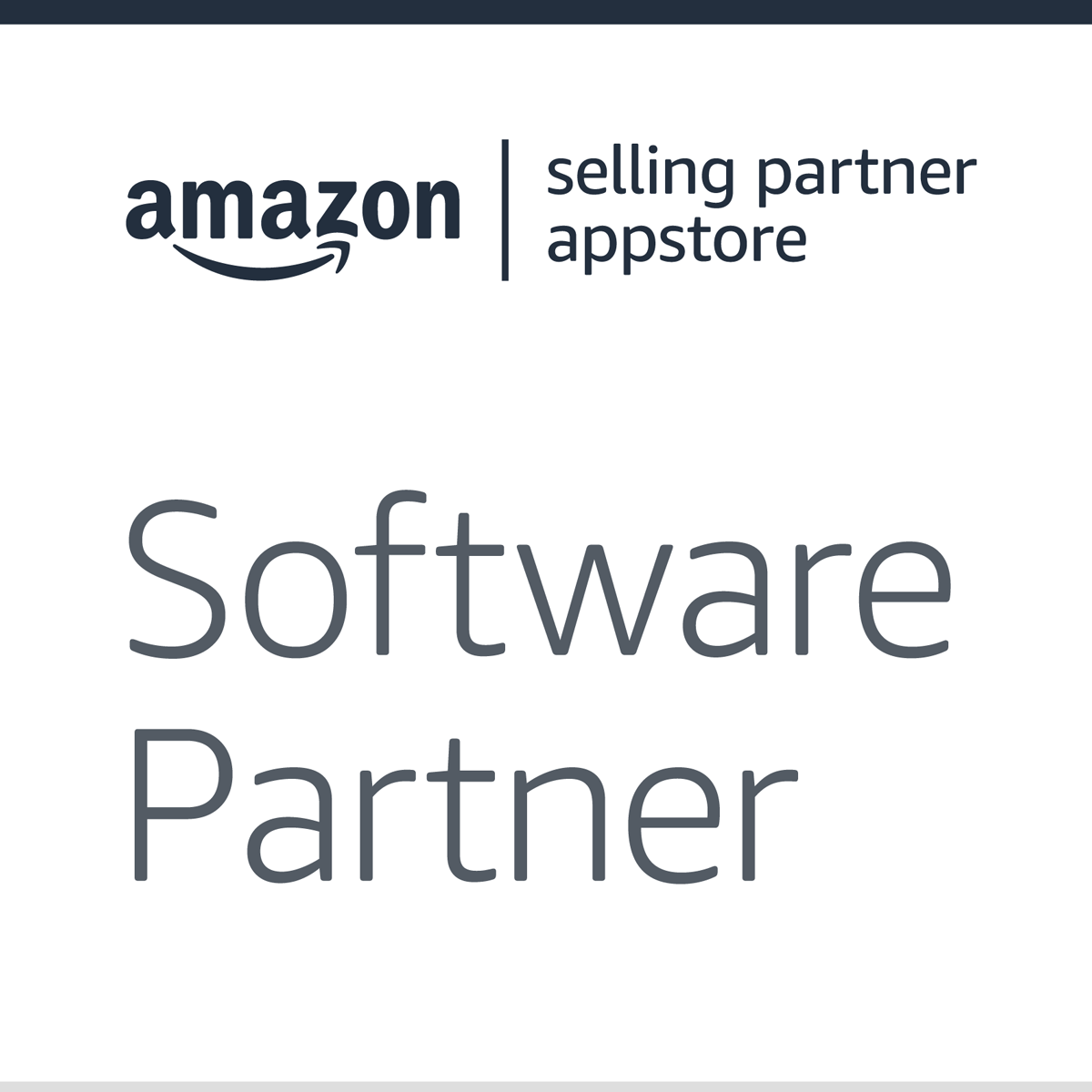Originally published on June 15, 2021, updated January 20, 2025
Menu
Join Our Email List
- Receive our monthly newsletter.
- Stay up to date on Amazon policies.
- Get tips to grow your business.
For today’s Amazon sellers, brand protection has to be top of mind. The fallout from a hijacked listing and cheap counterfeit of your top seller is far too damaging to your bottom line and brand reputation. And while there’s no end-all, be-all solution at this time, Amazon’s Brand Registry, and specifically its Transparency program, are a great start.
Here’s what you need to know about the burgeoning anti-counterfeiting program, including what it does, who can enroll, and the exciting new Amazon Transparency Customer Engagement feature recently launched for the mobile app.
The Amazon Transparency program is a product serialization service designed to help the marketplace thwart possible counterfeits by authenticating an item before it’s shipped to a customer.
Once your product is accepted into the program (currently available in the US, Canada, Germany, France, Italy, Spain, UK, Japan, Australia, and India), Amazon will provide you with a unique, alphanumeric, non-sequential Transparency code to officially note its authenticity.
You must apply a code to the packaging of every Transparency-enabled unit that you manufacture, even if it’s sold outside of the marketplace.
The Amazon Transparency program takes product tracking to the next level by allowing retailers and customers to trace items all the way back to the point of manufacturing, providing access to valuable data such as production date and location. This sets it apart from traditional UPCs and EANs, which only provide basic product information.
Amazon then scans this code — which it has exclusive access to and records of — to verify the item’s authenticity and ensure that the customer will be receiving the real thing and not a knock-off. This way, if someone tries to hijack your listing and sell an inauthentic item without the proper code, it will be flagged and fail to reach the customer before damage can be done.
 If you sell via FBA, Amazon will scan Transparency-enabled products within its fulfillment centers. Products that pass the check can continue on to delivery; those that aren’t marked with the right code or don’t have one at all will be pulled aside and investigated as potential counterfeits. If you fulfill your own orders, Amazon will still generate Transparency codes for you, but you must print and place each individual one. This is where the Amazon Transparency app really comes into play for customers.
If you sell via FBA, Amazon will scan Transparency-enabled products within its fulfillment centers. Products that pass the check can continue on to delivery; those that aren’t marked with the right code or don’t have one at all will be pulled aside and investigated as potential counterfeits. If you fulfill your own orders, Amazon will still generate Transparency codes for you, but you must print and place each individual one. This is where the Amazon Transparency app really comes into play for customers.
One of the biggest draws of the Amazon Transparency program is the empowerment it gives shoppers, and the way it does so just got even better — or shall we say more engaging.
 Shoppers can use the Transparency mobile app (available on iOS or Android everywhere Transparency is available) to scan products and verify their authenticity for themselves, regardless of where they bought the items. The app will show a green checkmark for valid codes and a red X for anything that’s not.
Shoppers can use the Transparency mobile app (available on iOS or Android everywhere Transparency is available) to scan products and verify their authenticity for themselves, regardless of where they bought the items. The app will show a green checkmark for valid codes and a red X for anything that’s not.
Brand owners can also share additional unit-level product details through the app, like the item’s manufacturing date and location as well as enhanced product information such as ingredients.
In the spring of 2021, Amazon upgraded the app's experience with the launch of its new Transparency Customer Engagement feature. Now, when customers scan Transparency codes with the Amazon or Transparency app, you can:
In an email to sellers, Amazon said the feature allows brands to boost the customer experience, reward customer loyalty, increase sales, build their community, and capture more feedback.
The Amazon Transparency Customer Engagement feature is a huge opportunity for participating brands to connect with and market to their customers, something that’s usually pretty limited in the Amazon space, while continuing to nurture that invaluable sense of trust.
Note that the Amazon shopping app can now be used to scan Transparency codes everywhere the program is available with the exception of India.
At this time there are three main eligibility requirements for the Transparency program. You must:
If you meet these requirements, Amazon instructs you to click on the “Get Started” button on its Transparency page. From there, you must fill out a short form and submit a request for additional information about the program. Amazon will then contact you to begin the official enrollment process.
Launched as a pilot program in 2017, Amazon Transparency has slowly been opening up to third-party sellers and international marketplaces. The now global service has been gaining steam and was said to have enabled the protection of more than 500 million product units in Amazon’s first-ever Brand Protection report.
So is it worth your investment? The extra layer of protection certainly makes it seem so, but as with most things in life, it may come down to cost. While there is no publicly available pricing information, it’s been widely stated across industry channels that brands can expect to pay anywhere from $0.01 to $0.05 per code based on product quantity.
New sellers enrolled in the Brand Registry can receive credits for Amazon's Transparency program. Learn how in this article about Amazon's New Seller Incentives.
Remember, a Transparency code is unique to the individual unit, so you’ll have to factor in your printing and labeling costs as well — will you apply the labels yourself, or can your supplier print the code directly onto the packaging during manufacturing? While these costs aren’t astronomical, they can really add up depending on the number of units that you enroll.
A good solution may be to test the waters with your best-selling (i.e. most at-risk to counterfeiters) product first. You can always add more later on!
Originally published on June 15, 2021, updated January 20, 2025
This post is accurate as of the date of publication. Some features and information may have changed due to product updates or Amazon policy changes.
These Stories on Amazon
14321 Winter Breeze Drive
Suite 121 Midlothian, VA 23113
Call us: 800-757-6840





Copyright© 2007-2025 eComEngine, LLC. All Rights Reserved. eComEngine®, FeedbackFive®, RestockPro®, and SellerPulse® are trademarks or registered trademarks of eComEngine, LLC. Amazon's trademark is used under license from Amazon.com, Inc. or its affiliates.
No Comments Yet
Let us know what you think